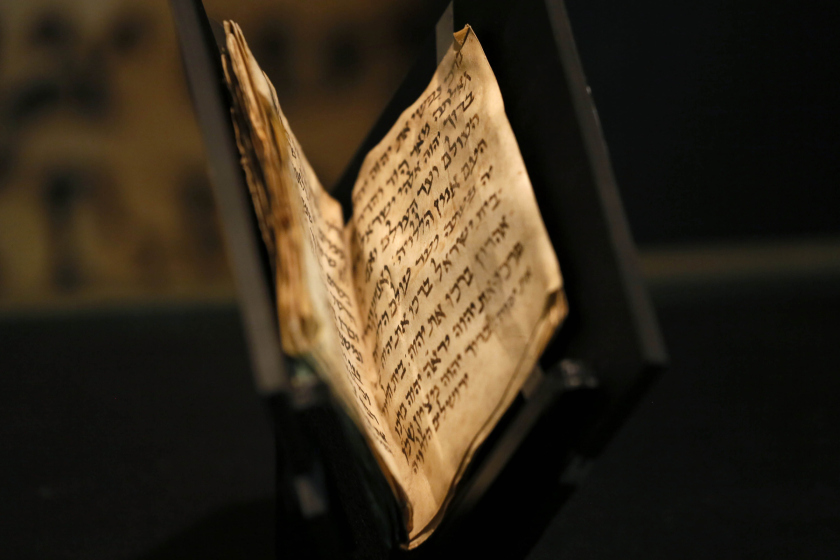

At the top of the sloping, green hill, the round castle looms dramatically against the sky. To the casual observer, the scene might just be another picturesque tourist attraction. But here at Clifford’s Tower in 1189, in York, England, a tragic, but little-known event in Jewish history took place.
It was the Third Crusade, and religious riots had broken out against the Jews of London, Lincoln and other cities across the country. In York, in the northern part of England, the entire Jewish population was attacked. In desperation, the city’s 500 Jews took refuge in the royal castle as they watched their homes pillaged by mobs, and their property looted.
The frenzied mobs, instigated by the clergy, assaulted the castle walls. For several days, the besieged Jews fought back bravely hurling stones against the enemy. But without food and water, and without weapons, the Jews were doomed.
When the mob finally broke into Clifford’s Tower, they were met with silence. The Jews had taken their own lives rather than fall into the hands of the raging Christian mob.

(Ironically, more than seven centuries later, New York would become the largest Jewish city in the world, and Clark Clifford, counsel to President Truman, would be instrumental in the United States recognizing the newly independent state of Israel. Coincidence or Divine providence?)
A century later, in the autumn of 1290, the entire Jewish population of England, 16,000 souls, were banished from the country by King Edward I. He allowed the Jews to take whatever cash they had, but confiscated their homes and property. The Jews would not return to England for 400 years.
In 1655, Oliver Cromwell, England’s Puritan ruler, invited Rabbi Menasseh ben Israel, a leading Sephardic scholar from Holland, to visit England to explore the possibility of readmitting Jews into the country. Although Cromwell’s lawyers decided that there was no real legal obstacle to Jews settling in England, an official invitation to the Jews was never issued. Nevertheless, slowly, Marranos from the Iberian Peninsula as well as Jews from Holland began to drift into the country. By the start of the eighteenth century, 20,000 Jews lived in England.

London’s first synagogue was opened in 1701 to serve the Spanish and Portuguese Jewish community. The Bevis Marks Synagogue, situated in a secluded courtyard, conducted services in Hebrew and Portuguese until the early 19th century.
Today, the Bevis Marks Synagogue is Britain’s oldest and most distinguished synagogue. Located in London’s financial district, it is still in use. The synagogue, with its magnificent brass candelabra, and its 300-year-old interior architecture, is a historical relic in the surrounding fast-moving world of the 21st century.
The fashionable West End of London also has several magnificent Ashkenazi synagogues. The Marble Arch Synagogue is in Westminster, as are the Central Synagogue and the New West End Synagogue. After weekly morning prayer services in each of these synagogues, worshipers are treated to a breakfast and friendly company. Alas, the number of worshipers in these downtown synagogues is dwindling.
Further north and to the west are some of London’s thriving Orthodox Jewish communities: St. John’s Wood, Hampstead, Golders Green, Hendon and Edgeware. Accessible by the Underground’s Northern Line, these communities offer a dynamic view of flourishing Jewish life in contemporary London.
Walking along Golders Green Road from the underground station, one sees an almost endless array of kosher restaurants and stores. Amazingly, the kosher pizza places and restaurants seem to be full of people even late at night. Animated conversations can be heard in English, Hebrew, French, Russian and other languages.
On or adjacent to Golders Green Road there are also numerous religious institutions and Haredi synagogues. Not far from the underground station, the Jewish Learning Exchange has numerous classes and programs for the community. Further away, is Reb Chuna’s Shtiebl ( a small neighborhood synagogue) where one can find a minyan practically all morning, and Jews from all over the world. The “Monk’s” shul is reminiscent of the Breuer’s Congregation in Washington Heights, New York. And for the night owls, there is Reb Hager Shtiebl, where there are continuous Arbit services till late at night.
Hendon, a fashionable and more modern Jewish community, is the home of many prominent Ashkenazi synagogues including Ner Israel and Adas, as well as various breakaway minyanim, located along or near Brent Street. There is also a major Sephardic synagogue, Od Yosef Hai, whose congregants originate from Iraq, India and other areas in the Middle East.
Edgeware, is an up-and-coming modern Orthodox Jewish community. Its recent erub (area where observant Jews can move without the restrictions on public Shabbat activity), completed in 2006, has resulted in rapid increases in housing prices as residents of Golders Green, Hendon, Ilford and fading Jewish communities flock into the community.
In the northeast of London, Stamford Hill, a totally different Jewish community thrives. Stamford Hill is a center of Hasidic Jewry. It is a racially integrated community vaguely reminiscent of Crown Heights in a European setting. At the intersection of Clapton Common and Stamford Hill Road, one sees men in Hasidic garb, women with head coverings pushing baby carriages, and various racial groups, all sharing the streets and intersections. Over a year ago, former Prime Minister Tony Blair personally attended the opening of a new religious school in Stamford Hill.
Britain’s total Jewish population is approximately 300,000. 166,000 Jews reside in the Greater London area. The London borough of Barnet, which includes Golders Green, Hendon, Finchley and Edgeware accounts for 47,000. Other Jewish communities are in Manchester and Leeds.
______________
Harold Gellis writes and lectures on Jewish history, Jewish communities and religious life, and is considered an expert on demographic and sociological trends in the Jewish world.



